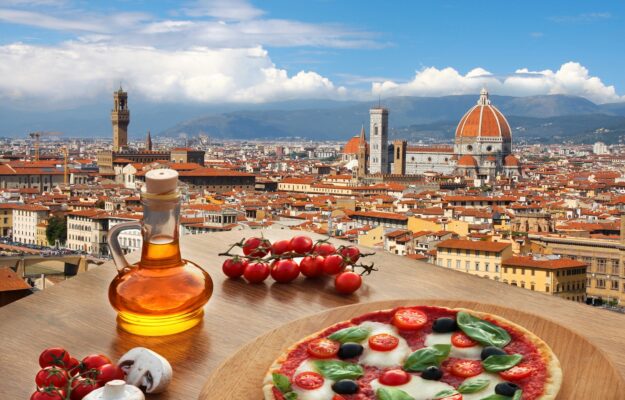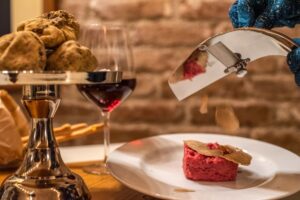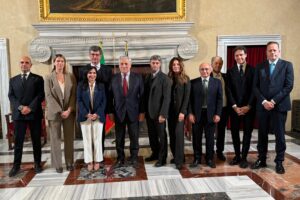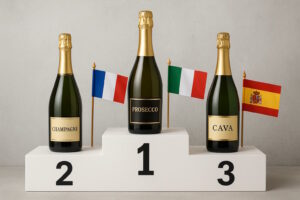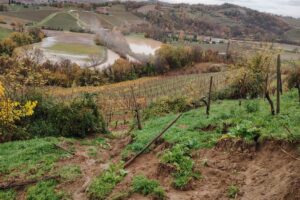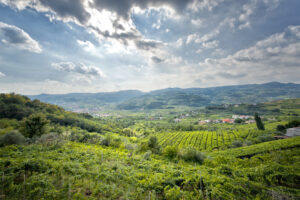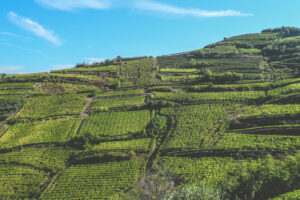90% of American tourists point to Italian food and wine as the reason of choice for spending their vacations in Italy, with food and wine topping the list of the most popular “beauties” among star & stripes vacationers, more than art and culture: this emerges from the results of a survey, carried out by Coldiretti and the specialized platform I Love Italian Food (Ilif). The survey, done on a sample of more than 1,000 U.S. citizens who visited our country, was released at the “Summer Fancy Food” 2024, in New York, the most important U.S. trade show dedicated to specialty foods. The event was also an opportunity to relaunch the candidacy of our cuisine as a UNESCO Intangible Heritage Site, with Minister of Agriculture Francesco Lollobrigida cutting the ribbon of the Italian Pavilion, the largest in the international area, with more than 300 companies. But Italian sounding remains a major concern: in the U.S., our fake products are worth 40 billion, with cheese leading the way.
According to the survey by Coldiretti and I Love Italian Food (Ilif), an association whose mission is to publicize and defend true Italian food and wine culture around the world, when asked to indicate the top three reasons for choosing a vacation in Italy, food and wine obtained 90% of the preferences, clearly surpassing art and culture (77%) and history and archaeology (65%), which precedes natural beauty (61%). In fifth place were visits to family and friends (55%). Among the most popular food and wine experiences are tastings of typical dishes from various regions, while in second place are visits to local farmers’ markets. This is followed by guided food and wine tastings, Italian cooking classes and meals in “starred” restaurants. The survey confirms that star & striped vacationers have a high budget and also pay special attention to the quality of food for which they allocate a high share of their spending during the vacation. That of U.S. tourists is an increasingly important presence for the national tourism balance, with the number of visitors more than tripling over the past 20 years, reaching more than 4 million arrivals in 2023, returning close to pre-pandemic levels, according to Coldiretti analysis of Bank of Italy data, for an expenditure of nearly 6.5 billion euros. Food and wine souvenirs are also very popular, with 77% of respondents saying they brought back to the States at least one souvenir of their Italian vacation to put on the table or give as a gift to family and friends. According to the Coldiretti/Ilif survey, the encounter with Italian cuisine and the products of the Mediterranean Diet produce effects that go beyond the simple product put in the suitcase. In fact, 32% of U.S. tourists claim to have significantly changed their eating habits after traveling to Italy and 6% to have completely changed them. It is no coincidence that extra virgin olive oil tops the list of the most consumed products of the Mediterranean Diet, ahead of fruits and vegetables, fish, pasta and red wine. Exports to the U.S. of the products-symbols of Italian food style over the past 10 years have registered increases in value even in triple digits: from +67% for olive oil to +193% for pasta. Sales of pummarola & co. in the States have practically tripled (+133%) but cheeses, from Parmigiano Reggiano Dop to Grana Padano Dop, have also almost doubled with +86%, according to Coldiretti analysis of Istat data. And wine is also increasingly present on American tables with a 63% increase in value. But the iconic product remains olive oil, with the United States overtaking Spain as the world’s second largest consumer, with 375,000 tons, and by 2030 could even surpass Italy.
Minister Lollobrigida, attending the opening of the Italian Pavilion in the “Summer Fancy Food”, said that “Italy is present by working together to promote its excellence, which strengthens the richness of our country, as well as being good for the rest of the planet because it also brings well-being to physical and mental health”. With him were the president of the Italian Trade Commission (Ice) Matteo Zoppas, Ambassador to the U.S. Mariangela Zappia, as well as Lidia Bastianich and Giada de Laurentiis (granddaughter of Silvana Mangano and Dino De Laurentiis), TV presenter, chef and entrepreneur.
“A world that sees Italy working as a system is the real challenge we must be able to interpret: wearing the blue jersey beyond political alignments”, Lollobrigida added, then recalling the G7 Agriculture event from September 21-29 in Syracuse, with a different format from the usual summit. “We have chosen to transform one of Sicily’s most extraordinary cities into an open-air Expo where we will present the best of what Italy can offer”, he said. And speaking of Italian sounding, the minister said that “of our products they can copy the package, but not the content, that is unique thanks to our 3,000 years of history. Others may have more advanced technologies, more wealth than us, but what Italy has had a chance to develop,has no equal anywhere else in the world”. He then recalled “our most powerful sales network, our restaurateurs, with 250,000 establishments, who also have enormous communication power to tell people about our products, explain why a product may cost a little more but is worth immensely more than what they try to copy us”.
Ice President Matteo Zoppas reaffirmed that “U.S. imports of Italian food and wine recorded a trend increase of 26% in the first quarter of 2024, a start with great momentum that we hope will continue”. While Ambassador to the U.S. Mariangela Zappia stressed that “Italian cuisine is already a major player in the United States, as is clear from the nearly 7 billion in our sector exports, yet it still has enormous potential for growth in this immense market. This is why the promotion of Italian agribusiness and cuisine is central to Farnesina’s growth diplomacy action, including in the United States”. According to a Coldiretti/Ixé survey, more than one Italian tourist out of two (53%) traveling abroad has found himself at the table “fake” Italian dishes and products, made with ingredients or procedures that have nothing to do with real Italian cuisine: in the Coldiretti space, in the “Summer Fancy Food” 2024, an expo is set up that compares the excellence of the Mediterranean diet with its fake versions. They range from “Pompeian” oil to Chianti Sangiovese wine made in California, to the ever-present Parmesan, which over the years has become a symbol of fake foods inspired by our best productions.
It is no coincidence that the U.S. ranks at the top of the list of the biggest cheesemakers, with Italian-sounding production exceeding 40 billion in value and with cheeses as the leading product. In 2023, 222 million kilos of Parmesan, 170 million kilos of provolone, 23 million kilos of pecorino romano were produced in the United States, in addition to nearly 40 million kilos of other Italian-style cheeses, such as friulano, according to Coldiretti’s analysis of data from Usda, the U.S. Department of Agriculture. Not to mention the more than 2 billion kilos of mozzarella, bringing the total of “Italian cheese” to nearly 2.7 billion kilos. The result is that more fake Italian cheeses are now being produced in America than local cheeses such as Cheddar. However, the problem affects all product categories starting with the most prestigious cured meats, such as imitations of Parma and San Daniele or Bologna mortadella or Milano salami.
In this perspective, the candidacy of Italian cuisine as a Unesco Intangible Heritage Site can be an important step to push for clarity, precisely starting with the United States, removing fertile ground from the proliferation of fake Italian food products in the world that represent an unsustainable ballast for the growth of Italian exports. “We can get to double Italian agrifood exports”, stressed Coldiretti President Ettore Prandini, “from the current 64 billion to more than 120, if a clear stop to the phenomenon of international food counterfeiting, which causes economic damage, but also image damage and takes away space from real Made in Italy products, would arrive. An objective that must also be pursued in trade agreements concluded by the European Union where the application of the principle of reciprocity is needed. The same rules imposed on Italian and European producers must apply to those who want to sell in Europe. We are ready to confront head-on all the markets of the world, bringing our quality”. This is demonstrated by the example of Parmigiano Reggiano, one of the excellences of made in Italy agri-food products, among the most loved by Americans (the U.S. is the main foreign market, with 6,000 tons exported in the retail channel in the first 5 months of 2024 alone). “In 2022 exports recorded an increase of +8.7% and in 2023 +7.7%, while, in the first five months of 2024, we are already at +24.6%”, says President Nicola Bertinelli. The Parmigiano Reggiano Consortium announced the consolidation of a strong investment in digital and influencer marketing activities, participation in fairs and events, activation and garrisoning of points of sale, support to operators and, above all, strengthening of supervision on the star & strip market.
Copyright © 2000/2025
Contatti: info@winenews.it
Seguici anche su Twitter: @WineNewsIt
Seguici anche su Facebook: @winenewsit
Questo articolo è tratto dall'archivio di WineNews - Tutti i diritti riservati - Copyright © 2000/2025










